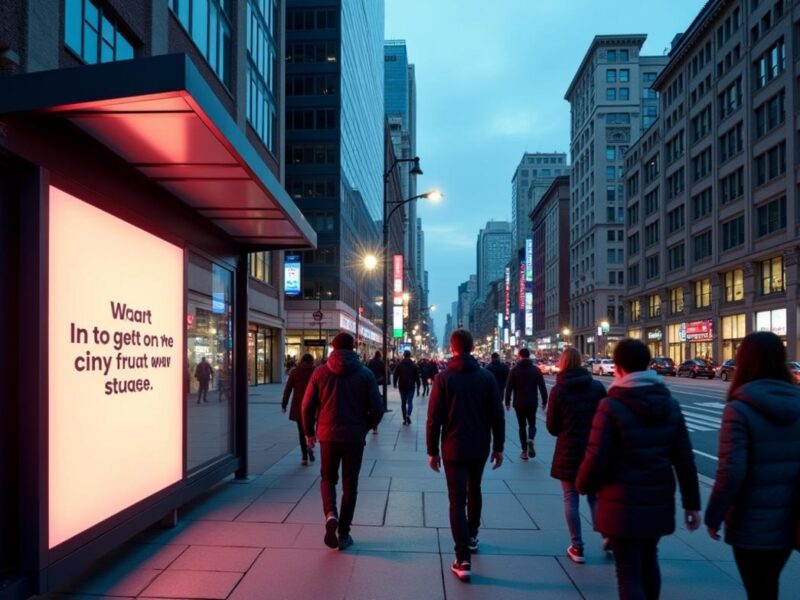Custom workwear is on the brink of a revolution, propelled by rapid technological advancements, a drive toward sustainable practices, and a deepening commitment to employee wellbeing. Businesses across industries are reimagining how apparel can do more than just outfit workers—it can improve safety, productivity, and brand identity.
Corporate leaders now realize that what employees wear directly affects how they feel, how well they perform, and how others view the company itself. Today’s smart companies understand that outfitting teams with premium, purposeful gear like Work Hard Dress Right custom workwear is about more than appearance.
It’s about investing in garments that integrate emerging technologies, respond to today’s environmental challenges, and support a healthier, happier workforce. This shift signals a future where workwear isn’t just functional—it’s transformative, setting new standards for the modern workplace.
As these innovations accelerate, the best custom workwear offers a decisive advantage to organizations that embrace them. It doesn’t just serve as a uniform, but as a tool that fosters loyalty, trust, and higher performance.
Companies that adopt cutting-edge workwear solutions send a strong signal to employees and customers: they care about quality, safety, and progress. In this article, we detail the key trends shaping the future of custom workwear: innovative technology, sustainability, enhanced customization, advanced manufacturing, and wellbeing-centered design. By exploring these areas, you’ll better understand how investing in better workwear can lead to tangible business benefits and a more satisfied workforce.
Contents
Smart Fabrics and Wearable Technology
From embedded sensors that monitor worker health in real time to textiles that detect and respond to hazardous materials, innovative fabrics are ushering in a new era of safety and productivity. Many of today’s garments can track vital signs such as heart rate, temperature, and respiratory rate, allowing real-time intervention if an employee shows signs of physical distress.
Specialized textiles can alert wearers to dangerous substances or sudden temperature changes. This enhanced responsiveness not only boosts safety for workers in high-risk environments but also empowers employers to be proactive about occupational health and jobsite hazards. These technological leaps are more than conveniences for industries like construction and manufacturing—they’re life-saving features.
The future promises even more integration, with fabrics able to notify workers of changing environmental conditions and alert supervisors to potential risks in real-time. Imagine uniforms that send vibration alerts in case of an unsafe gas level or remotely notify first responders of severe accidents. These innovations help companies demonstrate a commitment to worker safety, going beyond mandatory compliance to create genuinely protected workplaces. Learn more about how smart workwear is transforming industrial safety.
Sustainable Materials and Eco-Friendly Practices
As climate change and resource scarcity move to the forefront of business concerns, manufacturers are turning to eco-friendly materials like recycled polyester, organic cotton, and biodegradable fibers. These materials reduce the environmental impact of production and support a circular economy, where what is worn today could be responsibly reused or composted tomorrow.
Today’s custom workwear is just as durable and high-performing as traditional options, but it’s produced with far less environmental impact. As more governments and large corporations implement sustainability requirements, brands that invest in responsible manufacturing gain a competitive edge and meet regulatory expectations.
Companies also demand transparency in production, with ethical sourcing and fair labor practices becoming standard. Supply chain traceability is now a selling point, giving peace of mind to consumers and partners alike.
This dual focus—on sustainable products and responsible processes—ensures that workwear isn’t just functional, but reflects a brand’s core values. By adopting clean technologies and renewable energy in the manufacturing process, the industry sets a powerful example for sustainability. See how sustainability is reshaping custom workwear.
Customization and Personalization
Modern workwear is as much about self-expression and inclusivity as it is about utility. Companies now use their apparel to reinforce brand identity with custom logos, a broad palette of colors, and tailored designs suited to their teams’ unique needs. This bespoke approach means businesses can accommodate practical requirements—such as additional pockets, reflective materials, or temperature-regulating linings—while spotlighting their corporate culture.
The push for inclusivity means more gender-neutral options, a broader selection of sizes, and features considering different backgrounds and cultures. This shift in design strategy recognizes the importance of diversity in the workforce.
With advanced techniques such as embroidery, screen printing, and digital imprinting, businesses can achieve the perfect balance of durability, style, and affordability. Reliable measurement tools and virtual fitting technologies ensure correct sizing for maximum comfort and safety, directly impacting job satisfaction and productivity. Better-fitting garments help reduce injuries and boost confidence, supporting a happier, more cohesive team. Explore the latest developments in customizable workwear.
Advanced Manufacturing Technologies
New manufacturing technologies such as 3D printing and digital garment simulation are transforming how workwear is conceived and produced. With digital prototyping, designers quickly test and refine garments for fit, comfort, and utility—without wasting materials. This reduces sampling costs and waste and cuts time to market for new designs.
Advanced robotics and automation have also begun streamlining assembly processes, enabling greater precision and consistency in mass production. Manufacturers can now deliver precisely tailored uniforms faster and more sustainably, providing flexibility for businesses to update styles and features as industry demands change.
These technological advances mean businesses spend less on inventory, decrease their carbon footprint, and respond rapidly to shifts in workforce needs. Garments can be adapted almost instantly for seasonal changes, new safety standards, or industry trends. This adaptability is crucial for companies looking to maintain a modern, innovative brand image and ensure all employees receive the best possible apparel for their needs.
Focus on Worker Wellbeing
Employee well-being is now a central focus of modern workwear design. Ergonomically engineered apparel reduces fatigue, promotes freedom of movement, and is crafted with breathable, temperature-regulating fabrics to maximize comfort. Many custom workwear providers incorporate stretch materials, moisture-wicking linings, and adjustable components to accommodate different body types and climate conditions. This allows for greater flexibility and less distraction at work, directly supporting employee satisfaction and safety.
Beyond physical health, confidence in appearance and inclusivity also improve morale and loyalty. When employees feel they “belong” in their uniforms—literally and figuratively—they are more engaged and invested in their work. Growing evidence links wellbeing-centric workwear to enhanced workplace performance and reduced turnover rates, prompting companies to prioritize garments beyond minimum standards.
The result is a workforce that feels valued and supported, leading to lower absenteeism and greater overall productivity. As research links wellbeing-centric workwear to enhanced workplace performance, companies prioritize investments in garments that safeguard and uplift employees.
Custom workwear’s future is defined by innovation, responsibility, and genuine care for the people wearing it. Today’s businesses can set themselves apart by embracing new materials and tech, prioritizing ethical sourcing, and keeping the employee experience at the forefront. As enterprises embrace emerging trends and technologies, investing in forward-thinking solutions becomes essential to stand out and drive success and satisfaction across the modern workforce.



